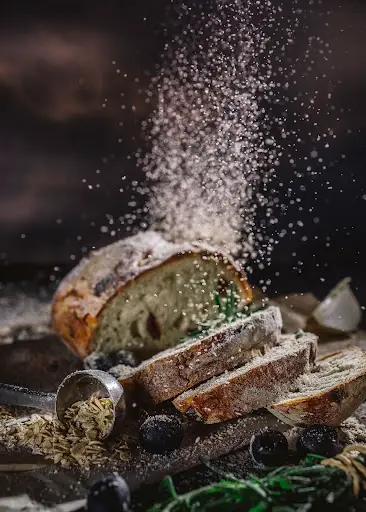7 Different Ways Yeast Is Used To Produce Foods And Beverages
Yeast performs pivotal roles in crafting various foods and beverages we enjoy daily. While many are aware of its need in baking and brewing beer, there’s so much more to this humble fungus!
Whether enhancing the rich flavors of chocolate, contributing to the sharp tanginess of vinegar, or forging unique flavors for yogurt—yeast has always been part of our culinary journey. Join us as we explore seven fascinating ways yeast helps create a multitude of our delicious staples!

7 Ways Yeast is Used to Produce Foods and Beverages
We often underestimate the roles multiple strains of yeast play in our everyday lives. Let’s explore 7 different ways yeast is put to use in the fascinating world of culinary production.
1. Bread Making
Baking bread at home is a rewarding experience. One fundamental ingredient to ensure you bake the perfect loaf every time is yeast. As yeast comes into contact with the sugars in your dough, it ferments them. This fermentation process produces carbon dioxide gas and alcohol.
The gas gets trapped within the dough, causing it to rise and expand. The result is a beautifully fluffy bread with a perfect crumb, all thanks to the reaction of yeast during the baking process.
2. Beer Brewing
Yeast plays a crucial part in beer production, specifically Saccharomyces cerevisiae, which is commonly used for ale brewing. The yeast consumes sugar from malted barley, with alcohol and carbon dioxide as by-products. That’s why your favorite pint has its delightful bubbles!
However, there are other yeast alternatives to Saccharomyces cerevisiae, including thiolized yeast. The role of thiolized yeast is particularly important in fruit-based or smoothie beers.
3. Cheese Production
Creating cheese is a fascinating process, shaped intricately by microbiology. Cheese production often involves the use of yeast alongside beneficial bacteria and molds. Yeasts contribute to the fermentation of lactose in milk, producing lactic acid and adding distinctive flavors to the cheese.
Besides this, yeasts are also used in surface-ripened cheeses like camembert and brie. A hint of yeast helps develop the robust and creamy flavor that makes these cheeses so desirable.
4. Chocolate Production
The next time you indulge in a piece of chocolate, consider the role that fermentation plays in its taste and quality. This process is essential for developing the flavors in chocolate. Harvested cacao beans are placed in large bins to ferment with yeasts found in the environment.
These yeasts go to work converting sugars within the beans into alcohol. This initial fermentation step is crucial as it breaks down bitter compounds present in darker chocolates.
5. Vinegar Production
Vinegar is produced through a two-step fermentation process that begins with yeasts. In the first step, yeast ferments natural sugars into alcohol in an anaerobic environment. Then, in the second stage, specific bacteria convert this alcohol into acetic acid under aerobic conditions.
This acetic acid gives vinegar its characteristic sharp flavor. From your favorite salad dressing to cleaning solution at home, remember that yeast plays a significant role in creating vinegar.
6. Kombucha Making
When it comes to creating that fizzy, tangy drink known as Kombucha, yeast performs an essential role. Alongside beneficial bacteria, yeast forms a “Symbiotic Culture of Bacteria and Yeast” or SCOBY. This SCOBY ferments a sweet tea mixture, converting sugars into alcohol.
The bacteria then convert this alcohol into acetic acid, giving Kombucha its distinctive sour taste. Meanwhile, the carbon dioxide released during fermentation adds the fizz we love.
7. Yogurt Production
When producing yogurt, milk is inoculated with lactic acid bacteria (yeast), which ferment the lactose sugars into lactic acid. Although yeast isn’t traditionally involved in yogurt-making, some types, like ‘yogurt yeast’ (Kluyveromyces marxianus), can ferment lactose.
In some special formulations, yeasts are used alongside traditional bacterial cultures to enhance the fermentation process and add unique flavor profiles while enhancing its probiotics.
In Conclusion…
From making bread rise to brewing the perfect pint, yeast plays a remarkable role in our kitchens. As we’ve explored, its significant contribution extends far beyond these common uses. Its influence on flavor enhancement in foods like cheese, chocolate, and even vinegar.
Pizza Stone Dough Roller Slicer Sauce
We exclusively bring you lists of some gadgets related to food, drinks, beverages for your home, kitchen, picnic, parties and more. Below are highly reviewed Pizza Stone Dough Roller Slicer Sauce on sale from Amazon store. ENJOY 🙂[amazon box="B001SAQDYS,B019S3W8AO,B00473ULA0,B000HK2DNA,B06X9QWJVV,B086P7GP35,1639730192" template="horizontal"]


